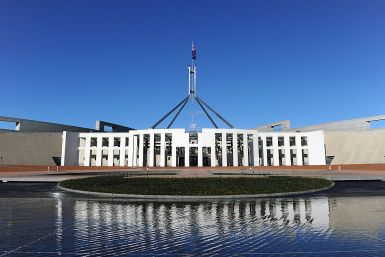The demand for part-time or contract jobs has been on the rise, with an estimated 986,400 people (6.6% of employed individuals) now doing multiple jobs.
The national credit card debt is predicted to exceed AU$2.7 billion by 2025, meaning that millions of Australians will be struggling with Christmas debt for at least six months.
The likelihood of millennials cutting back on their takeaway expenditures is more than double that of baby boomers -- 34.2% of millennials plan to spend less on fast food, compared to just 14.4% of baby boomers.
The median balance option delivered impressive returns in 2024, and members who invested aggressively in assets like shares saw notable growth in both domestic and international markets, with many options churning out returns of over 10%.
According to Andrew Podger, a professor of public policy at ANU, Australia needed to shift its focus towards creating a system that helps older Australians turn their accumulated super savings into reliable incomes, ensuring they can maintain their living standards and manage the financial challenges of old age.
Student loans will now be adjusted annually based on the lower rate between the Wage Price Index (WPI) and the Consumer Price Index (CPI). This modification is effective retroactively for the previous two fiscal years.
The promotional stunt, organized by the Libertarian Party, aimed to protest the government's fuel taxes, which currently added 55 cents per litre to the cost of petrol.
Individuals affected by this change will be required to switch to electronic payment methods to send foreign currency.
A research, commissioned by Australian Seniors, found that the pension was only covering 76% of the total lifestyle expenses, with seniors getting caught in the tight choice between buying essential items and discretionary spending for future savings,
According to the latest figures from the Australian Bureau of Statistics, the average annual salary for full-time workers in Australia is currently AU$103,812, while the median salary -- the figure that represents the "middle" earnings -- is AU$88,920.
According to a recent Gartner research, nearly half (49.2%) of Gen Z workers in Australia expressed general confidence in the nation's present business climate, indicating a high level of optimism about job availability.
While retirees are seeing some financial relief, the ASFA Retirement Standard emphasizes the need for better access to quality financial counsel to help Australians manage rising retirement costs and plan for the future.
Variables like shifting interest rates, erratic real estate values, and international conflicts can all drive down ROI. Therefore, Australians must review their superannuation plans to make sure they're on track to meet their retirement goals.
Located just under an hour's drive north of Melbourne's CBD, Mickleham has seen rapid population growth as young families, priced out of inner-city housing, move to more affordable areas. However, the development has raised concerns among locals and experts alike.
Due to the sweeping closure of service centers and call centers from Dec. 25 to 27, and Jan. 1, 2025, individuals will be required to report their income early and on a new reporting date to receive payment on time.
The report identified eight groups as being particularly at high risk of multiple deprivation -- JobSeeker Payment, Parenting Payment, Disability Support Pension, or Youth Allowance, single-parent families, First Nations people, and those renting social or private housing.
This demonstrates the substantial influence that Australia's real estate market has on the people's wealth, with the average household having a net worth of AU$1.58 million.
Under Australia's consumer law, buyers are only entitled to a return or refund if the product is faulty or doesn't match the description, not if they simply change their minds.
The monthly consumer price index (CPI) increased 2.1% in the 12 months to October 2024. A more steady inflation environment was shown by the fact that this increase fell short of the 2.3% market projection.
The Australian Prudential Regulation Authority said in a statement it was confident the 3% buffer will help households stay afloat and repay their loans under various scenarios.
Treasurer Jim Chalmers and Finance Minister Katy Gallagher confirmed in a joint statement that the fund's main goal was to maximize returns, with the growth rate benchmark and risk profile remaining unchanged.
The rate of business failure increased to 5.04% in October, the highest level since the peak of the COVID-19 pandemic in 2020, when it was 5.08%.
As underlying inflation remained "too high," RBA noted that it wanted to see consistent inflation data before considering a rate cut, to ensure any decline was sustainable.
Young Australians, aged 18 to 29, reduced their expenditure by 2% year over year in the third quarter of 2024, with significant drops in both essential (by 2.3%) and discretionary (by 1.9%) spending.
"Mortgage arrears rates have risen, but they remain low and at similar levels in Australia and the United States," Christopher Kent, assistant governor of Reserve Bank of Australia, said. "This is despite the significant rise in required mortgage payments in Australia."
Starting Jan. 1, 2026, businesses providing essential goods and services, such as groceries, fuel, banks, and utilities or health services, will be required to accept cash, with some exemptions.
Though NAB had initially predicted the Reserve Bank of Australia (RBA) would cut interest rates in February 2025, now, that doesn't seem like a possibility before May 2025.
The Australian Bureau of Statistics revealed that the number of people with full-time jobs increased by 9,700 last month, while the part-time rose by by 6,200, taking the total growth to 15,900.
"The latest decision of a 3.75% wage increase paid from 1 July 2024 was lower than the September quarter 2023 increase of 5.75%," noted the ABS head of prices statistics Michelle Marquardt. "It was also lower than the commission's September quarter 2022 awarded increase of between 4.6% and 5.2%."
The vendors, who were highly reliant on Coles, Woolworths and Aldi, see their efforts dwarfed by supermarkets' tactics, forcing them to restrict their business to the domestic market, the industry's peak body told the ACCC.











































